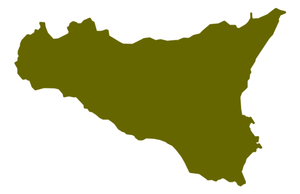ORIGIN
Ravioli and Tortellini are said to come from the same family. In fact, the pasta category “Ravioli” is said to encompass tortellini. According to the Lost Ravioli Recipes of Hoboken, ravioli and tortellini are not just interchangeable, but the etymology of tortellini accounts for the evolution and origin of ravioli! “Of course it is no coincidence that the names are nearly the same : tortellini and torta come from the same family, indicating that perhaps ravioli descends from pie. It is a good theory. The fillings are often quite the same.” (Schenone, Laura 2008, 172)
The first known description of ravioli was in 1100 in Arabic. The dumpling was referred to as sambusaj, or a triangular piece of pasta filled with ground meat. (Zanini de Vita, Oretta 2009, 224) It would appear, from this record, that the Italians got the ravioli from the Arabs while they controlled Sicily. Interesting….Ravioli first appeared in Italian cuisine in the North, in the 1500s, around Lombardy where they were called Maribuni. (Zanini de Vita, Oretta 2009, 223) Interestingly enough, maribuni could derive from the word marù, which means chestnut, referring to the abundant quantity of filling like a chestnut in its shell, though the shape is not consistently round. The maribuni ravioli appears not only in the traditional round form but also as a square and half-moon, which is how it is still made in the countryside. (Zanini de Vita, Oretta 2009, 178) By the 1800s, ravioli was popular in the South as well where the filling was local vegetables and cheeses, housewife usually used the meat, cheese or greens she had on hand as filling. (Zanini de Vita, Oretta 2009, 224)
I thought I might share an interesting tidbit about a wrapper other than pasta used in earlier centuries (13th and 14th) : they sometimes used the skin that was around the intestine of the pig to make little cloths to wrap the filling. They add, though, “if you want, in place of the skin, you can use pasta instead”. Interesting that pasta was only a suggestion in an otherwise animal wrapped pasta recipe! (Zanini de Vita, Oretta 2009, 224) Fun fact: ravioli “might find some of its ancestors in the old recipes for stuffed stomach and blood puddings, such as haggis, known to the romans in the first century ...might sausage be a forerunner for ravioli too?” (Zanini de Vita, Oretta 2009, 224)
“In the Middle Ages, …ravioli.... were [fried] in a frying pan with oil or with another fat and take out of the pan, then [dipped] in honey.” (Schenone, Laura 2008, 179) The Encyclopedia of Pasta provides another recipe for fried ravioli: “The Raviola is first fried, then simmered in milk until the milk boils completely away.” (Zanini de Vita, Oretta 2009, 221) While these fritters are still called ravioli, the classic cooking method we know today is boiling. The Neapolitan Recipe Collection contributes a description of a boiling method which seems to be a cross between our understanding of boiling and frying: “set these ravioli to cook in the fat broth of a capon or of some other good meat, with a little saffron and let them boil for half an hour” (Schenone, Laura 2008, 179) Also from The Neapolitan Recipe Collection a more classic interpretation: “boil them gently so they do not fall apart; when they begin to boil, remove them and set them out in dishes with sugar and cinnamon. you can make them yellow with saffron” (Scurry, Terence Peter 2000, 177) Cooking in Europe offers an interesting alternative to just plain water for the boiling process : “then let them cook in water, on lean days with butter and a little saffron in the water, and let them cook quickly so they don’t break.” (Albala, Ken, 84)
Ravioli has had a long journey, both geographical and evolutionarily. It travelled all the way across Italy and may have even come from the Arabs originally. Throughout its journey, ravioli has had different wrappers and fillings and has been cooked by frying and boiling but one thing has remained consistent : it has always been a wrapped food.

